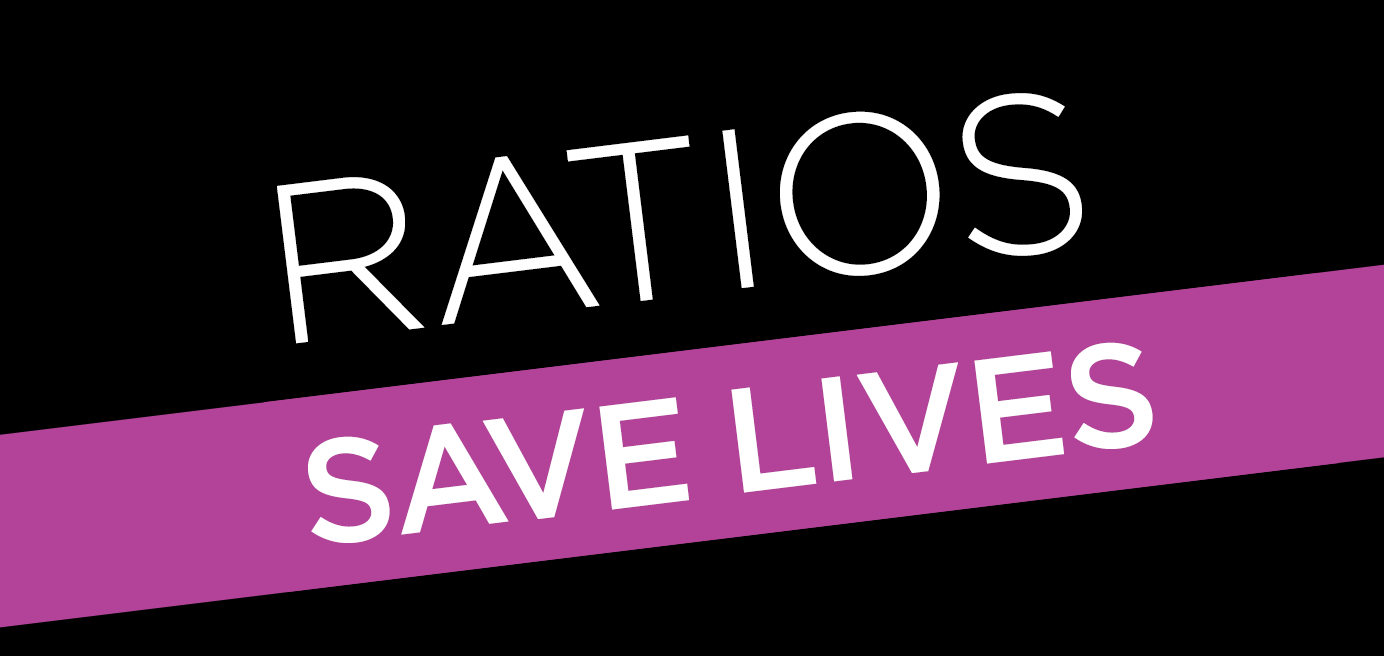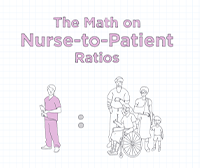 Minimum Nurse-to-Patient Ratios
Minimum Nurse-to-Patient Ratios

Minimum Nurse-to-Patient Ratios Are Coming to BC
Members can get involved in shaping minimum nurse-to-patient ratios in British Columbia. Put your name forward to have your say in focus groups or surveys and help monitor ratios at your worksite.
British Columbia is the first province in Canada to establish minimum nurse-to-patient ratios (mNPR), setting a global precedent with a staffing standard of one nurse for every four patients in medical/surgical units, 24/7.
BCNU has championed this initiative, and nurses know that this is a significant step toward improving health care for nurses and patients. Establishing proper minimum nurse-to-patient ratios will allow nurses to dedicate more time to delivering life-saving patient care.
The Ministry of Health and BCNU is working with health authorities to implement the first phase of minimum nurse-to-patient ratios. Work continues to establish mNPRs for remaining hospital settings and non-hospital settings, such as long-term care and health authority community settings.
Regional Ratio Representatives - NEW
BCNU is proud to introduce our new regional ratio representatives. This team will be on the front lines of minimum nurse-to-patient ratios implementation, supporting unit engagement, monitoring progress, and building strong local networks to ensure safe staffing and better patient care across BC.
Meet our new reps:
- Michael Pluegge (Fraser Health)
- Lorraine Black (Fraser Health)
- Amandeep Turre (Fraser Health)
- Denise Nelson (Interior Health)
- Lacy Neilson (Interior Health)
- Kyla Dres (Interior Health)
- Victoria (Tori) Coe (Nevakshonoff) (Interior Health)
- Christine Green (Island Health)
- Eileen Mathieson (Island Health)
- Raelene Stevenson (Northern Health)
- Roxanne Fitzsimmons (Northern Health)
- Frances Beswick (Providence Health Care)
- Gurvir Sekhon (Provincial Health Services Authority)
- Henry Wen (Vancouver Coastal)
- Xavier Yee (Vancouver Coastal)
- Annelise Henderson (Vancouver Coastal)
Ratios Implementation
The following ratios will be applied in acute care settings (hospital-based) beginning this fall:
Phase 1
| SETTING | RATIO |
| General Medical / Surgical Inpatient | 1:4 24/7 |
| Rehabilitation | 1:5 Day/Evening 1:7 Night |
| Palliative | 1:3 |
| Focused (Special) Care | 1:3 |
| High Acuity / Step Down | 1:2 |
| Intensive Care | 1:1 |
| Pediatric Medical / Surgical | 1:4 |
| Pediatric Focused (Special) | 1:3 |
| Pediatric Intensive Care Units | 1:1 |
| Pediatric High Acuity Units | 1:2 |
Phase 2
| Neonatal Intensive Care Unit (NICU) | 1:1 to 1:3 |
| Post-Anesthesia Care Unit (PACU) | 2:1 to 1:2 |
| Maternity Care - Antepartum | 1:3 |
| Maternity Care - Labour & Delivery | 1:1 during active labour; 2:1 at birth |
| Maternity Care - Postpartum | 1:3 for dyad care (nurse for both parent and newborn); 1:4 for birth parent only |
| Maternity Care - Newborn Care Nursery | 1:3 |
| Operating Room (OR) | 2.5:1 |
| Alternative Level of Care | 1:7 |
| Emergency Department - General Emergency | 1:3 |
| Emergency Department - Short Stay Observation | 1:4 |
| Emergency Department - Medical/Surgical Short Stay | 1:4 |
| Emergency Department - Trauma | 1:1 |
| Emergency Department - Critical Care | 1:1 |
| Emergency Department - Fast Track | 1:4 |
| Emergency Department - Waiting/Triage | Visits per year |
Government Commitment and Funding
In April 2023, the Nurses' Bargaining Association (NBA) and the Ministry of Health signed an agreement to enhance nursing support across the province by implementing minimum nurse-to-patient ratios in hospitals, long-term care and assisted living facilities, as well as community and non-hospital care settings.
To fund the implementation of this model, a total of $750 million has been allocated: $200 million for 2023/2024, $250 million for 2024/2025, and $300 million for 2025/2026.
In March 2024, the province announced an investment of $237 million in funding initiatives to help retain, return, and recruit new nurses into the health-care system.
Joint Regional Implementation Committees (JRICs)
To support the implementation of minimum nurse-to-patient ratios (mNPRs) across British Columbia, Joint Regional Implementation Committees (JRICs) have been established within each health authority. These committees play a critical role in ensuring that mNPRs are consistently and effectively applied across all hospital-based care settings.
Each JRIC is composed of six core members, evenly split between representatives from the BC Nurses’ Union and the health employer. The health employers’ members include the Chief Nursing Officer, a senior operational leader with a nursing background, and a senior labour relations leader. On the BCNU side, the committee includes one elected representative, a senior labour relations leader, and an additional BCNU representative.
Below, you will find the list of JRIC members for each health authority:
Please note that this list is for your awareness only. If you would like to bring any matters forward to the JRIC members, please connect with your regional council member.
Fraser Health
- Peggy Holton – Council Member (BCNU), peggyholton@bcnu.org
- Wendy Gibbs – Council Member (BCNU), wendygibbs@bcnu.org
- Cindy Keates – Labour Relations Coordinator (BCNU)
- Julie Fraser – Chief Nursing and Allied Health Officer
- Ken Casorso – Executive Director, People Services
- Rich Dillon – Executive Director, Ridge Meadows Hospital
- Wendy Newson – Executive Director, mNPR (Ex-Officio)
Vancouver Island Health
- Deidre Knudson – Council Member (BCNU), deidreknudson@bcnu.org
- Cait Jarvis – Co-Chair, Council Member (BCNU), caitlinjarvis@bcnu.org
- Amanda Hackman – Labour Relations Coordinator (BCNU)
- Krista Allan – VP-Quality, Safety, Research Chief Nursing and Allied Health Officer
- Marko Peljhan – VP-Clinical Services Acute Care
- Anne-Marie Rousselle – Executive Director, Employee Relations
- Joanne Maclaren – Executive Director, mNPR (Ex-Officio)
Vancouver Coastal Health
- Angela Crawford – Co-Chair, Council Member (BCNU), angelacrawford@bcnu.org
- Kristina Hernandez – Council Member (BCNU), kristinahernandez@bcnu.org
- Amanda Hackman – Labour Relations Coordinator (BCNU)
- Lorraine Blackburn – VP Professional Practice, Chief Nurse and Allied Health Officer, CCIO
- Wayne Balshin – VP People
- Gail Malenstyn – VP Richmond Acute Services
- Braden Davie – Executive Director, mNPR (Ex-Officio)
Providence Health Care
- Meghan Friesen – Co-Chair, Council Member (BCNU), meghanfriesen@bcnu.org
- Frances Beswick – Interim Regional Council Member (BCNU), francesbeswick@bcnu.org
- Cindy Keates – Labour Relations Coordinator (BCNU)
- Becky Palmer – Chief People, Nursing and Health Professions Officer
- Katie Twaites – Executive Director, Human Resources
- Amanda Harvey – Executive Director, Acute Care
- Sara-Grey Charlton – Executive Director, mNPR (Ex-Officio)
Provincial Health Services Authority
- Claudette Jut – Co-Chair, Council Member (BCNU), claudettejut@bcnu.org
- Amanda Hackman – Labour Relations Coordinator (BCNU)
- Gail Craig – Labour Relations (BCNU)
- Natasha Prodan-Bhalla – VP, Quality, Practice & Clinical Informatics, CNAO
- Susan Wannamaker – EVP, Clinical Service Delivery
- Jennifer Martin – Executive Director, HR
- Tina Costa – Executive Director, mNPR (Ex-Officio)
Northern Health
- Danette Thomsen – Co-Chair, Council Member (BCNU), danettethomsen@bcnu.org
- Teri Forster – Council Member (BCNU), teriforster@bcnu.org
- Cindy Keates – Labour Relations Coordinator (BCNU)
- Angela De Smit – VP Professional Practice, Chief Nursing Officer and Allied Health
- Natalie Kulyk – Executive Director, UHNBC
- Emily Plummer – Executive Director, Strategic LR and mNPR
- Sandra Barnes – Executive Director, mNPR (Ex-Officio)
Interior Health
- Shalane Wesnoski – Co-Chair, Council Member (BCNU), shalanewesnoski@bcnu.org
- Candi DeSousa – Council Member (BCNU), candidesousa@bcnu.org
- Amanda Hackman – Labour Relations Coordinator (BCNU)
- Cheryl Whittleton – Chief Nursing & Allied Health Officer & Professional Practice Leader
- Diane Shendruk – VP, Clinical Operations, IH North
- Vickie Horton – Manager, Labour Relations
- Donna Mendel – Executive Director, mNPR (Ex-Officio)
FREQUENTLY ASKED QUESTIONS

Check out the work underway to educate the public on the ways ratios save lives.
Media
- Interview: September 18, 2025: In March 2024, British Columbia became the first province in Canada to establish minimum nurse-to-patient ratios — a policy meant to protect nurses from burnout and create better health outcomes for patients. But are those ratios really being implemented?
This is VANCOLOUR host Mo Amir asks BC Nurses’ Union President Adriane Gear.
Documents and Links
- Policy Directive
- Implementation Instruction Manual
- Rural and Remote Hospital Sector Ratios
- Planning Template
- JRIC Terms of Reference
Bulletins
August 14, 2025
June 19, 2025
April 10, 2025
November 14, 2024
September 19, 2024
September 4, 2024
April 26, 2024
March 1, 2024
April 4, 2023
Oct. 24, 2023
BCNU Support
Members can submit requests for support from our membership department and occupational health and safety department – prevention team on this BCNU Support page.

